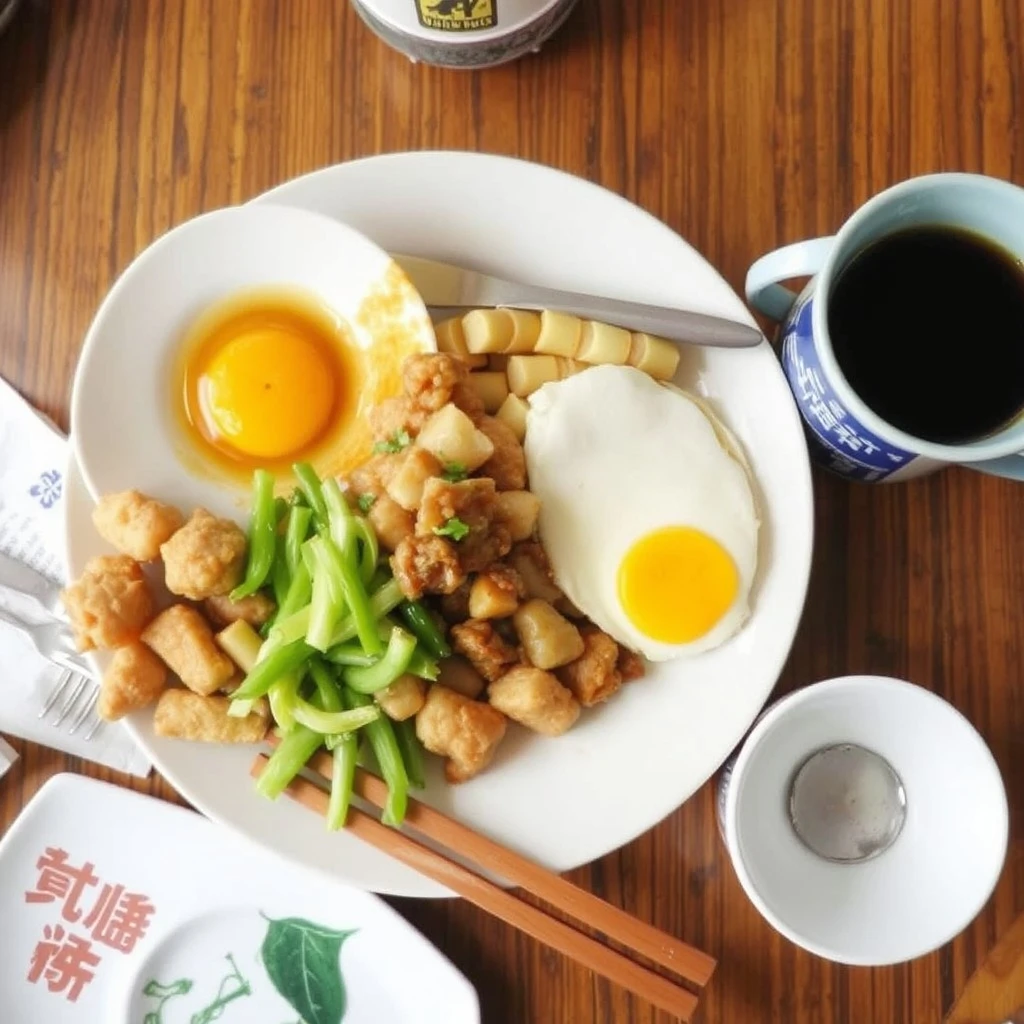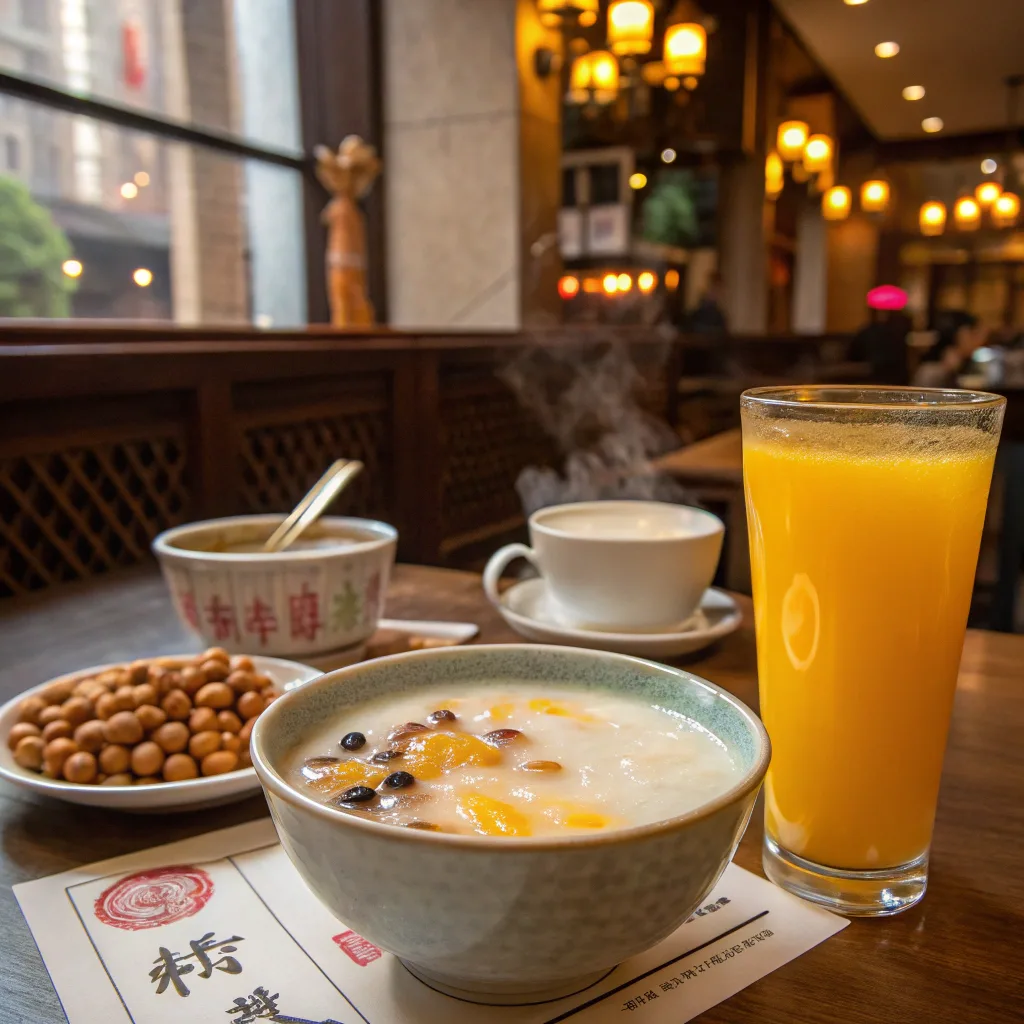what a typical breakfast in China
Breakfast in China offers a rich variety of dishes that reflect the country’s diverse culinary traditions. It’s more than just a meal—it’s a way to connect with culture and family. Chinese breakfasts often include hearty rice-based meals, steamed buns, and soy-based drinks. Depending on the region, the choices range form light to filling dishes. So, what is a typical breakfast in China? Let’s dive in and explore the range of options that people enjoy across the country every morning.
Introduction to Chinese Breakfast Culture
In China, breakfast is seen as an essential ritual, energizing people for the day ahead. Unlike the quick, cold options common in Western breakfasts, such as cereal or toast, Chinese breakfasts emphasize warm, savory dishes made from fresh ingredients. From regional specialties to simple street food, mornings start with a sense of community and tradition.
Common Ingredients in Chinese Breakfast
Chinese breakfast staples revolve around basic yet flavorful ingredients like rice, flour, soy, and vegetables. Popular dishes such as congee (a rice porridge) and steamed buns filled with meats or vegetables are rooted in these essentials. Soy-based products, including soy milk and tofu, provide protein, while pickled vegetables or meats add a burst of taste and nutrition.
For an in-depth understanding of how these dishes fit into a healthy diet, explore tips for crafting a nutritious morning meal.
Regional Variations in Chinese Breakfasts
What is a typical breakfast in China? The answer changes depending on where yuo are in the country. In northern China, people favor hearty dishes like dumplings and congee. Meanwhile, in southern regions, rice noodles and dim sum hold a special place at the breakfast table. The eastern coast embraces soy milk and fried dough, while the west enjoys spicier dishes such as lamb porridge. Each region’s offerings reflect local tastes, climate, and agricultural practices. This variety ensures that no matter where you are, breakfast in China provides a unique culinary experience.
Popular Breakfast Dishes Across China
Several dishes are synonymous with a typical breakfast in China. From sweet to savory, the choices are plentiful. Some of the most popular include:
The Culture Trip: A Guide to Traditional Chinese Breakfast
Congee: A rice porridge served with toppings like pickled vegetables or fried dough.
Baozi: Steamed buns filled with meat, vegetables, or tofu.
Dim Sum: Bite-sized treats found in southern China.
Soy Milk and Youtiao: The pairing of soy milk with crispy fried dough sticks.
Jianbing: A savory pancake, often sold by street vendors.
These dishes represent the range of flavors and textures enjoyed by millions of people throughout China.
Street Food and Breakfast Culture
Street food plays an important role in what is a typical breakfast in China. Food stalls are everywhere, offering quick, hot meals to busy locals. In major cities, breakfast street foods like jianbing (savory pancakes) and baozi (steamed buns) can be found on nearly every corner. These foods are freshly made and provide a satisfying meal on the go. Even with China’s fast-paced urban lifestyle, these street foods remain a comforting part of morning routines. Street food vendors also embody a sense of tradition, offering an authentic taste of China’s breakfast culture.
Breakfast Drinks in China
What is a typical breakfast in China without a drink? Many Chinese people start their day with beverages like soy milk or tea. Soy milk comes in both sweet and savory versions, complementing a variety of breakfast dishes. Tea, ranging from green to black, is another staple. Many families also drink tea during breakfast as a way to cleanse the palate. In addition, some regions serve broths or soups with their morning meals. These drinks provide balance and refreshment, making them the perfect companions to a Chinese breakfast.
Nutritional Aspects of a Chinese Breakfast
A typical breakfast in China provides a balanced diet, offering a a mix of carbohydrates, proteins, and fats. Many Chinese breakfast dishes are built on rice or wheat products, giving the meal a solid carbohydrate foundation. Protein comes from tofu, eggs, and meats, while vegetables and pickles add vitamins and minerals. Soy milk is a common breakfast drink and provides protein and calcium. This balance of ingredients makes Chinese breakfasts both nourishing and filling, ensuring people are energized for the day ahead.
Evolution of Breakfast Habits in Modern China
In recent years, breakfast habits in China have evolved. While traditional foods like congee and baozi remain staples, the growing influence of global food trends has led to the popularity of fast food options. International chains now serve breakfast items like sandwiches, pastries, and coffee. However, many Chinese still prefer their traditional breakfasts, with local dishes holding strong appeal. This blend of the old and the new shows how Chinese breakfast culture continues to change while maintaining its roots.
Dining Etiquette During Breakfast
When sharing a typical breakfast in China, diners follow customs that reflect the country’s emphasis on family and togetherness. People often share several dishes, with everyone eating from communal bowls. This way of dining promotes a sense of unity and respect. At breakfast restaurants, some places serve dim sum on carts, allowing guests to select freshly prepared options. Eating together during breakfast is a sign of respect and a reminder of the importance of family bonds in Chinese culture.
Breakfast for Special Occasions
Breakfast in China takes on a special meaning during holidays and festivals. For example, during Chinese New Year, families prepare special foods like dumplings, symbolizing wealth and good fortune. Other festive foods include rice cakes, which represent prosperity and renewal. These dishes carry deep cultural significance and are enjoyed during family gatherings. On special occasions, breakfast becomes more than just a meal—it transforms into a celebration of family, tradition, and cultural values.
Comparison with Western Breakfasts
What is a typical breakfast in China compared to a typical Western breakfast? The two differ in many ways. While Western breakfasts often consist of quick, cold options like cereal or toast, Chinese breakfasts feature hot, savory dishes. Rice and noodles take center stage in China, while eggs, pastries, and bacon are more common in the West. Additionally, Chinese breakfasts tend to be more varied, with several smaller dishes served together, while Western breakfasts usually focus on one or two main items. These differences reflect contrasting cultural attitudes toward food and meals.
Vegetarian and Vegan Breakfast Options
If youre a vegetarian or vegan, what is a typical breakfast in China? There are many plant-based options to enjoy. Dishes like congee, baozi, and dim sum can be customized with vegetarian fillings such as mushrooms, vegetables, or tofu. Soy milk, naturally vegan, is also widely consumed as a breakfast drink. Vegetarian and vegan breakfasts are common in China, and many restaurants offer plant-based options. These meals highlight the diversity and inclusivity of Chinese breakfast culture, making it easy for everyone everyone to find something they enjoy.
How to Make a Typical Chinese Breakfast at Home
Making a typical Chinese breakfast at home is easier than you might think. Congee, for example, requires just rice, water, and your choice of toppings. yuo can add tofu, eggs, or pickled vegetables to create a flavorful, satisfying dish. Jianbing, a popular street food, involves making a savory pancake, filling it with eggs, vegetables, and sauces. By using a few basic ingredients, you can replicate the experience of a Chinese breakfast right in your kitchen.
The Art of Tea: What is a Typical Breakfast in China and its Connection to Morning Tea
Tea plays an essential role in a typical breakfast in China. GReen, black, and oolong teas are commonly consumed alongside breakfast dishes. Tea complements the flavors of foods like soy milk, baozi, and congee. Drinking tea also reflects China’s deep cultural connection to the beverage, which has been enjoyed for thousands of years. THe tradition of tea-drinking during breakfast brings balance and refreshment, making it an integral part of the morning routine.
What is a Typical Breakfast in China? The Comforting Taste of Soy Milk and Fried Dough
Soy milk and fried dough (youtiao) form one of the most beloved combinations in Chinese breakfast culture. This pairing, enjoyed by millions, provides a warm, comforting start to the day. Soy milk, whether sweet or savory, perfectly complements the crispy, golden fried dough. Many people dip the youtiao into the soy milk, creating a satisfying texture and flavor combination. THis dish is simple yet iconic, offering both nourishment and a taste of tradition.
FAQs
What is a typical breakfast in China?
A typical breakfast in China is diverse, varying by region, but commonly includes dishes like congee (rice porridge), baozi (steamed buns), jianbing (Chinese crepes), and youtiao (fried dough sticks). These dishes are often paired with drinks like soy milk or tea, reflecting a balance of flavors and nutritional variety.
Is Chinese breakfast always savory?
No, while savory dishes dominate Chinese breakfasts, there are also sweet options available. For instance, sweet buns filled with custard or red bean paste, sweet soy milk, and sweet rice cakes are popular in certain regions, offering a delightful mix of tastes.
Can I make Chinese breakfast at home easily?
Yes, many traditional Chinese breakfast dishes can be made at home with simple ingredients. For example, congee is straightforward to prepare with rice and water, while recipes for baozi or jianbing are widely available online. Essential tools like a steamer or non-stick pan will help recreate these dishes.
What is the most popular breakfast in China?
While preferences vary by region, congee and youtiao are among the most popular breakfast items across China. These staples are easy to find at street food stalls and enjoyed by people of all ages for their simplicity and comforting flavors.
Are there vegetarian options for breakfast in China?
Absolutely! Chinese breakfast offers numerous vegetarian-friendly options, including vegetable-filled baozi, plain congee with pickled vegetables, jianbing with egg and herbs, and a variety of tofu-based dishes. Many traditional recipes naturally exclude meat, making them suitable for vegetarians.
Conclusion
A typical breakfast in China is more than just food—it’s a cultural experience. From hearty congee to simple soy milk and fried dough, Chinese breakfasts offer a wide variety of flavors and textures. These meals reflect the country’s deep culinary traditions and provide both nourishment and energy. Whether enjoyed at home or from a street food stall, breakfast in China is about more than filling the stomach—it’s about celebrating culture and connecting with family. So, when you ask what is a typical breakfast in China, remember that its a meal full of history, flavor, and meaning.


